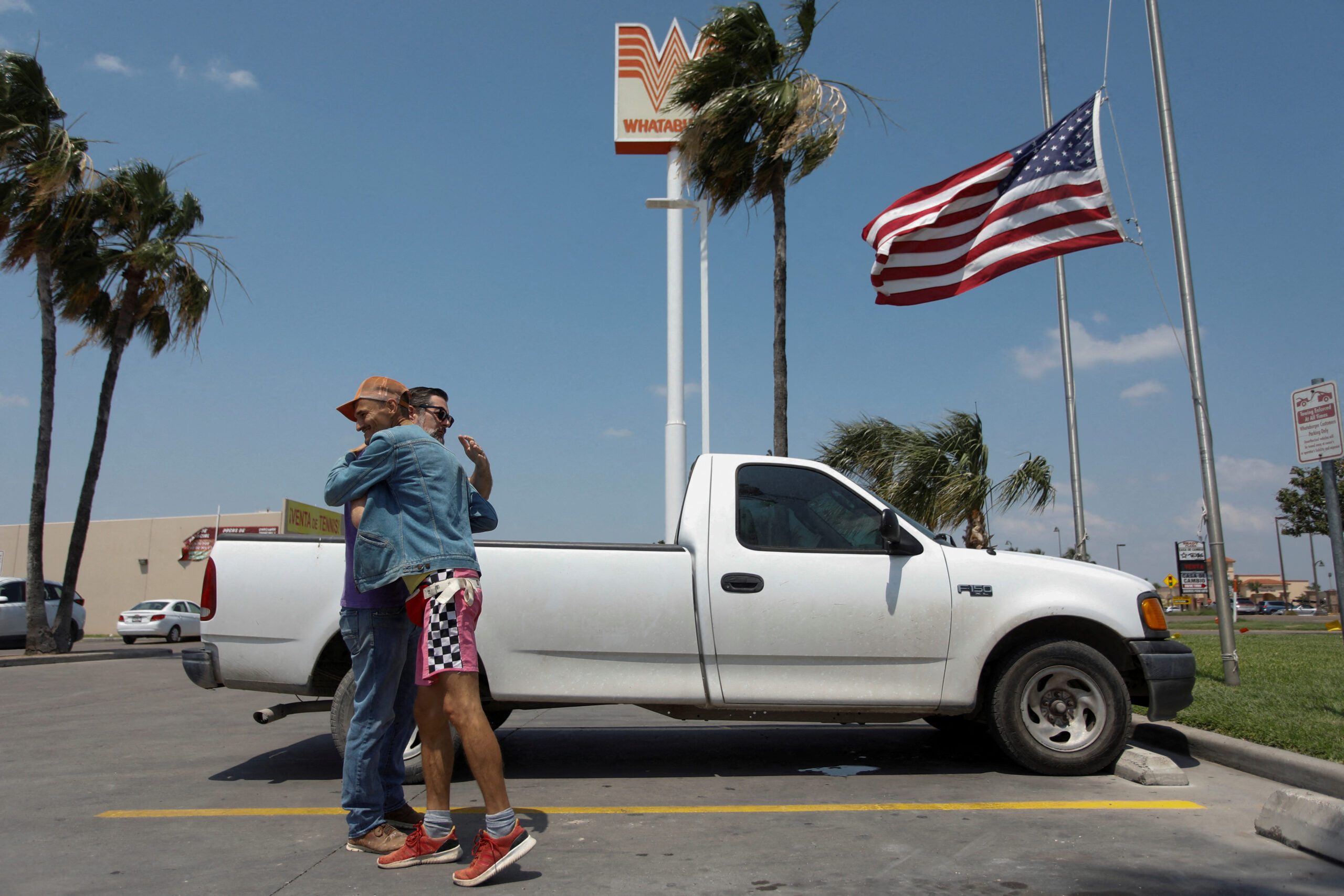SUMMARY
This is AI generated summarization, which may have errors. For context, always refer to the full article.

The Biden administration began implementing a sweeping policy shift at the United States-Mexico border on Friday, May 12, as a COVID-era order that had allowed the swift expulsion of many migrants expired and new asylum restrictions took effect amid confusion and uncertainty.
Several last-minute court actions added to questions about how President Joe Biden’s reworked border strategy will play out, with advocates filing a legal challenge to the new asylum regulation as it was enacted.
Facing concerns that the end of a three-year-old order – known as Title 42 – could further strain US border facilities, cities, and towns, US officials were keeping a close eye on the movements of migrants that had already reached record numbers in recent days.
“We continue to encounter high levels of non-citizens at the border, but we did not see a substantial increase overnight or an influx at midnight,” when Title 42 expired, US Department of Homeland Security (DHS) official Blas Nunez-Neto told reporters on Friday.
Seeking to discourage migrants from traveling to the border, the Mexican government said its national migration institute has ordered its offices not to issue immigration documents or other permits enabling travel within the country, creating another obstacle for migrants.
Though a chaotic race to US border ports of entry on Thursday appeared to have given way to relative calm on Friday, there was a sense of confusion among some migrants.
At the US border fence dividing El Paso, Texas, from Mexico’s Ciudad Juarez, hundreds of migrants who had slept there overnight formed a single file line to be brought into the US by authorities and put on buses. Texas National Guard, state troopers and border agents patrolled the area.
Immigration advocates represented by the American Civil Liberties Union filed a legal challenge against the new asylum bars, claiming they violate US and international laws.
Advocates argue the new regulation, put in place by Biden’s Democratic administration to curb illegal crossings, resembles restrictions imposed by his Republican predecessor, Donald Trump, that they had successfully blocked in court.
US Homeland Security Secretary Alejandro Mayorkas defended the Biden regulation, saying it aims to encourage migrants to enter using legal pathways. “It’s going to be a tough transition,” he told MSNBC.
US asylum officers hurried to figure out the logistics of applying the new asylum regulation.
Further complicating the new US policy, a federal judge in Florida ordered the US Border Patrol not to release any migrants without first issuing them formal notices to appear in immigration court. The Texas attorney general later asked a federal judge to do the same.
Scramble ahead of the changes
In chaotic scenes on Thursday, migrants scrambled to enter the country before the new rule went into effect. The regulation presumes most migrants are ineligible for asylum if they passed through other countries without first seeking protection elsewhere, or if they failed to use legal pathways for US entry, which Biden has expanded.
Tens of thousands of migrants this week waded through rivers, climbed walls and embankments onto US territory.
In San Diego, a Colombian man, who was among asylum seekers taken to a hotel for processing, said he and his wife crossed on foot and spent four nights outside. He was granted an asylum hearing in 60 days and paroled.
“We didn’t have anywhere else to go,” said the man, who described himself as a former Colombian air force member who had been threatened by armed groups in his homeland.
Lindsay Toczylowski, director of Immigrant Defenders Law Center, one of the groups suing the Biden administration, said the new asylum policy was “extremely disappointing when people’s lives are in the balance.”
Around 25,000 migrants were being held in US Customs and Border Protection facilities near the border on Friday, down slightly from record highs earlier in the week, according to the National Border Patrol Council, a union for agents. About 10,000 migrants per day were reported crossing illegally this week.
A 17-year-old Honduran boy died after being found unconscious in a Florida shelter on Wednesday, according to the US Department of Health and Human Services. Unaccompanied children are exempt from the new regulation, and advocates have warned that parents might send children across the border alone.
COVID-19 emergency ends, asylum ban begins
Trump first implemented Title 42 in March 2020 as COVID-19 swept the globe. The order allowed American authorities to quickly expel migrants to Mexico or other countries without a chance to request asylum.
Some Democrats and immigration advocates say Biden’s new regulation is too harsh.
The measure also counters previous statements Biden made in 2020 on the campaign trail, when he said it was “wrong” for people not to be able to seek asylum on US soil.
Biden, who campaigned on reversing Trump’s policies and is now running for re-election in 2024, kept the order in place.
Migrants have been expelled more than 2.7 million times under Title 42, although the total includes repeat crossers.
Mexico has generally only accepted certain nationalities – its own citizens, migrants from northern Central America and more recently migrants from Venezuela, Cuba, Haiti, and Nicaragua. So, during the same period, around 2.8 million migrants ineligible for expulsion were allowed into the US under a process known as Title 8 to pursue immigration claims.
Republicans fault Biden for easing Trump’s more restrictive policies, while the Biden administration has blamed Republicans for blocking legislation to reform the immigration system. – Rappler.com
Add a comment
How does this make you feel?






There are no comments yet. Add your comment to start the conversation.